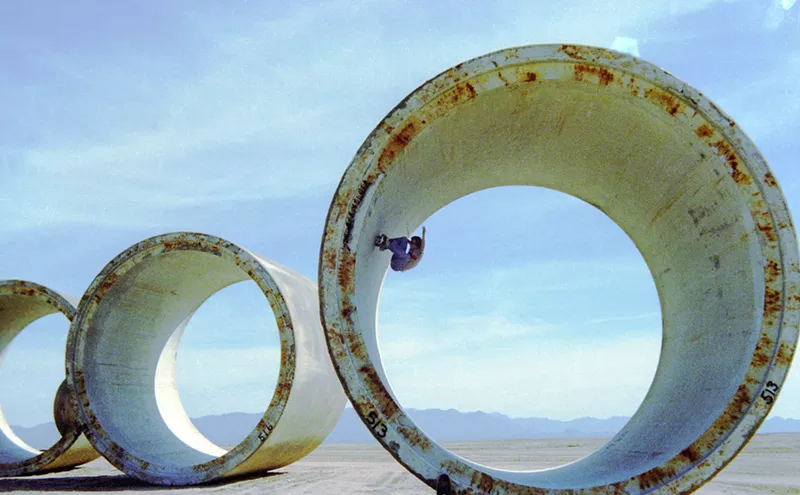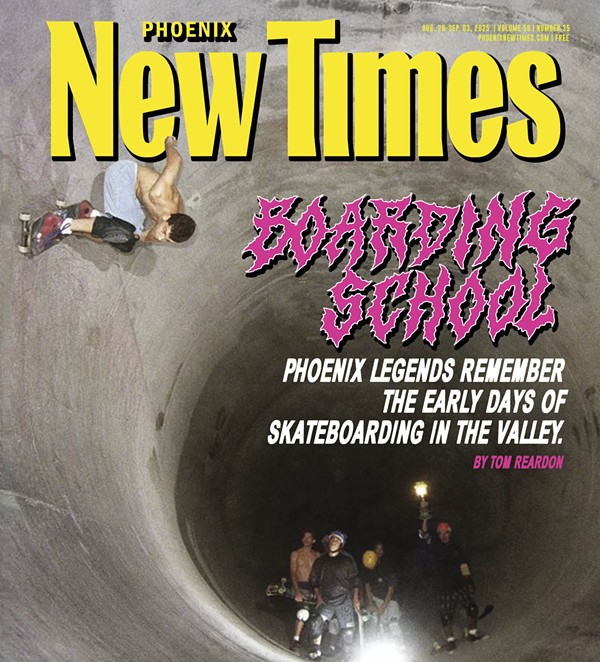In his prime, the late John L. Sullivan was one bad cat. The Irish-born boxer may have only been a mere 5-foot-10, but he wielded a 74-inch reach (which tops such modern-day heavyweights as Mike Tyson or Roy Jones, Jr.), frequently fought in bare-knuckle contests, amassed a record of 38-1-2, and sported a badass old-timey mustache.
And according to James J. Houlihan -- curator of the touring exhibition "The Fighting Irishmen: Celebrating Celtic Prizefighters 1820-Present," which opens today at the Irish Cultural Center's McClelland Library -- Sullivan routinely made a habit of challenging fellow pub patrons to impromptu matches.
"He was famous for going into many a bar and saying, "I can lick any son of a bitch in the house.' That was his standard line," Houlihan says. "And he definitely could."
See also: - The Irish Cultural Center's McClelland Library Opens to the Public - Irish Cultural Center Building Castle-Shaped Research Library
The exploits of Sullivan, which include holding the world heavyweight championship for a decade in the late 1900s, are depicted in the critically acclaimed exhibition, as are the deeds of dozens of other Irish-born fighters from throughout boxing's lengthy history. In particular, "The Fighting Irishmen" focuses on the turn of the century era, where the sweet science was dominated on pugilists who emigrated from the Emerald Isle.
"[Sullivan] was the largest and most popular sports figure of the 19th century," Houlihan says. "In those days, boxing, baseball, and horseracing were about it. Those were the three biggest spectator sports. There wasn't a lot else going on as there wasn't any football, basketball, hockey, or golf. So these boxers were very, very famous, even through the first half of the 20th century."
The exhibition is a literal time capsule of boxing lore dating back to the era prior to the Civil War and contains a treasure trove of photographs that were featured in the pages of Sports Illustrated, movie clips, and other ephemera. Lore and memorabilia from such legendary fighters such as Jack Dempsey, Gene Tunney, Barry McGuigan, and Freddie Gilroy is included in the wealth of material making up "The Fighting Irishman."
"We have all these great champions included, and yes, some lesser-known individuals from boxing history that are featured in the exhibit," Houlihan says.
That includes such names as "Butcher" Bill Poole, a bare-knuckle competitor who is more notorious for his membership in the Bowery Boys gang, as depicted by Daniel Day Lewis in Martin Scorcese's 2002 film Gangs of New York. The great Muhammad Ali is also featured in the annals of the exhibit, as Houlihan says he's considered to be an Irish fighter due to the fact his maternal great-grandfather came to America from County Clare in Ireland right after the Civil War and married a recently freed slave. (Ali, who currently resides in the Valley, is also scheduled to appear at the exhibition's opening reception tonight.)
Other highlights of "The Fighting Irish" include such gems as Sullivan's fur coat and a punching bag he used to train, a blazer owned by Dempsey, and Tunney's vintage boxing gloves, as well as a variety of posters and programs promoting some rather famous fights.
One particularly infamous fisticuff contest that's featured in the exhibit is Sullivan's July 1889 matchup with Jake Kilrain, which took place during a sweltering summer day in a field outside of Hattiesburg, Mississippi. It was the last-ever bare-knuckle fight for the world's championship that went a record 75 rounds, and -- according to Houlihan -- was considered to be an illegal battle the time.
"Fighters and promoters were often one step ahead of the law in those days. In most of the states boxing was illegal, so if they got caught they could wind up in jail," Houlihan says. "That fight went for 75 rounds and for several hours. You can imagine how tough they had to go through that. And you think about today and most fights only going a few rounds and they have actual gloves. These gentlemen didn't."
The opening reception for "The Fighting Irishmen: Celebrating Celtic Prizefighters 1820-Present" takes place from 6 to 9 p.m. on Thursday at the Irish Cultural Center's McClelland Library.
The exhibition will be on display through May 31. Hours are 10 a.m. to 3 p.m. on Tuesdays, Thursdays, and Fridays; 10 a.m. to 7 p.m. on Wednesdays; and 6 p.m. to 9 p.m. on First Fridays. Admission is $10 for the general public; $5 for seniors, students, and children, and $3 for ICC members.
Follow Jackalope Ranch on Facebook and Twitter and Pinterest.









